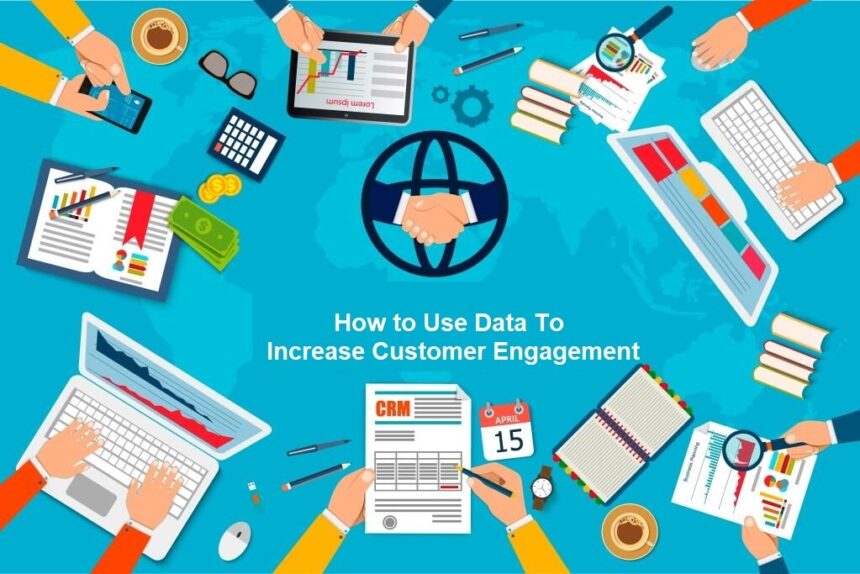Maximizing customer engagement is a core element of expanding your audience, boosting retention and, ultimately, securing more sales. Still, actually knowing what your customers want and expect can be tricky unless you take advantage of data’s educational power. Analyzing data offers a chance to gain a deeper insight into consumers and adapt your website to be more appealing. How can you do that? Here are five ideas to get you started.
1. Tailor your Marketing for Stronger Impact
Targeted advertising is a major aspect of digital marketing, and believe it or not, it’s quite a hit with consumers. Seventy-one percent of people surveyed on the topic said they preferred ads which suit their individual buying habits and interests. 46 percent also said a key benefit of targeted marketing was its reduction of irrelevant ads. Creating targeted ads designed to engage more of your ideal audience works better for your business and your buyers: you increase your chances of higher ROI while customers may find products and services, they genuinely want rather than being bombarded by useless ads. Make this easier by segmenting your website data into multiple categories revolving around consumer behavior. Look at shared personal interests and common purchase patterns, to help your marketing reach the right people.
2. Go Omnichannel
Omnichannel communications are increasingly important today: businesses utilizing omnichannel service well have been shown to retain as many as 89 percent of customers on average. Offering support via multiple channels (live chat, telephone, social media, email etc.) gives consumers the freedom to reach your agents via the method most convenient to them. Live chat software, in particular, is a major benefit to companies and customers alike, providing you with valuable data while giving visitors free, fast interactions. You can use various analytical features to monitor your support team’s service, such as average conversation lengths. This in-depth reporting lets you learn about buyer behavior and refine your website to be more satisfying.
3. Offer a Personalized Service Unique to Each Customer
Want to make your customers feel valued and visible? Personalize their experience of visiting your website, just as giants like eBay, Amazon and other massive brands do. Consumers buying from these sites on a regular basis will be greeted by products suited to their purchase history and interests (or what the business’s perceive them to be). Bought a horror movie? Expect to see more. Fan of comic-books? You’ll be offered ones you might not even have realized you wanted. This helps customers feel like your website is exclusive to them and prevents them having to scour your catalog to find the products they care about. You can set this up by adding cookies and pixels to your site to track users. Over time, you’ll gather invaluable data on your buyers’ activities and be able to deliver a bespoke shopping experience. If your website is using affiliate tracking program analyze the data from the referral sources and how they interact with your website, compared this to the rest of your audience.
4. Identify your Website’s Strengths and Weaknesses
Your website may not be perfect. Few of them are (if any.) Certain pages or features might be frustrating to customers and serve as real obstacles in their journey to the checkout. You have to identify these issues and fix them to increase your website’s ability to engage visitors — if you don’t, you could be losing yourself a lot of money. Gathering data from monitoring customer calls, on-site behavior and buyer feedback will all help. Invite consumers to answer a quick question after completing their purchase, such as ‘would you recommend this website to friends?’ or ‘on a scale of 1 – 10, how likely would you be to use this service again?’. You can even ask them what they would change about the website if they could. Seventy percent of customers will provide feedback when asked, so make the most of it. As this data comes direct from buyers, it gives you a better idea of how to maximize engagement in an actionable way.
5. Try to Predict Future Customer Activities
Using predictive analytics is exactly how it sounds: you evaluate data to predict future customers’ behavior and purchases, honing your website to deliver the best experience based on discoveries. Predictive analytics can help you identify which types of content and features are most engaging, allowing you to build on these. You’ll know which areas to focus on to drive future conversions and bring visitors back. This is different to exploring historical data to see what mistakes you may have made — you’re looking at what will be rather than what was. You can avoid potential errors, reduce your risk of abandoned transactions and increase your retention.
Conclusion
As you can see, data plays a big part in creating a more engaging buying experience for your customers. Using data as discussed above will help you understand which areas of your site demand revision, which work best and which should be overhauled completely. Take advantage of analytics software/tools, and don’t be afraid to just ask consumers about their experience. Accessing actionable data in a user-friendly form has never been easier—or more useful.

